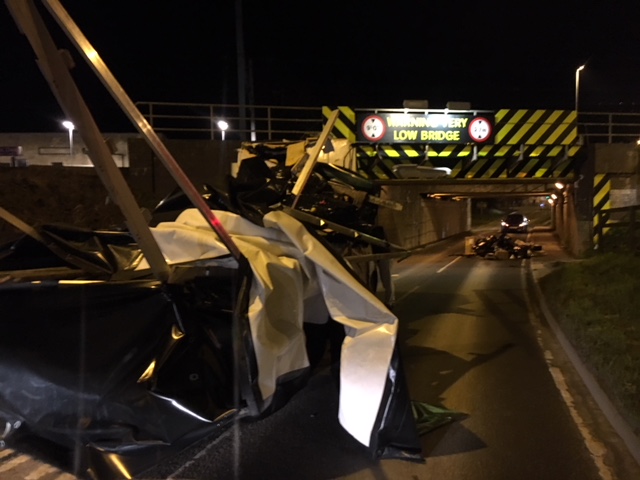
Railway bridges were struck more than 1,500 times in 12 months at a rate of one every six hours.
Stuntney Road bridge in Ely was the most bashed, accounting for 18 of the 1,532 strikes between April 1 last year and March 31.
Network Rail (NR) has said the strikes cost the rail industry around £20 million in delays, cancellations and repairs, with the delays adding up to 100 days (150,000 minutes).
The total number of bridge strikes is the lowest figure recorded in five years, and 4% down on the previous 12 months. NR reported 1,588 strikes in 2022-23, 1,864 in 2021-22, 1,650 in 2020-21 and 1,825 in 2019-20.
NR already has its ‘Wise Up, Size Up’ campaign, in which it reminds lorry drivers to check the height of their vehicles and plan their routes to avoid low bridges, while a team of bridge strike champions raise awareness by visiting haulage companies.
- Stuntney Road, Ely - 18 strikes
- Stonea Road, Stonea - 17 strikes
- Lower Downs Road, Wimbledon - 17 strikes
- Watling Street A5, Hinckley - 15 strikes
- Harlaxton Road, Grantham - 14 strikes
- Doncaster Road (A638), Ackworth, Ferrybridge - 13 strikes
- Warminster Road Bridge, Wilton - 11 strikes
- Abbey Farm, Thetford - 11 strikes
- Kenworthy Road Bridge, Homerton - 11 strikes
- Jews Lane, Twerton - 10 strikes
Martin Frobisher, Network Rail’s Group Safety and Engineering Director, said: “Every time a vehicle hits a bridge it can serious safety issues for road and rail users. To compound matters, these incidents can delay tens of thousands of passengers while we inspect the bridge and repair any damage – creating cost from public funds which should be used upgrading and improving our network.
“We’ve done a lot of work with transport partners to tackle bridge strikes and it’s encouraging to see this is paying off with a general downward trend in the number of incidents.”
However, he admitted more needs to be done, and warned NR will report drivers who don’t know the height of their vehicles or follow signs showing the height of bridges to traffic commissioners as NR “always looks to recover the entire repair and delay costs from the driver and the operator”.














Login to comment
Comments
No comments have been made yet.